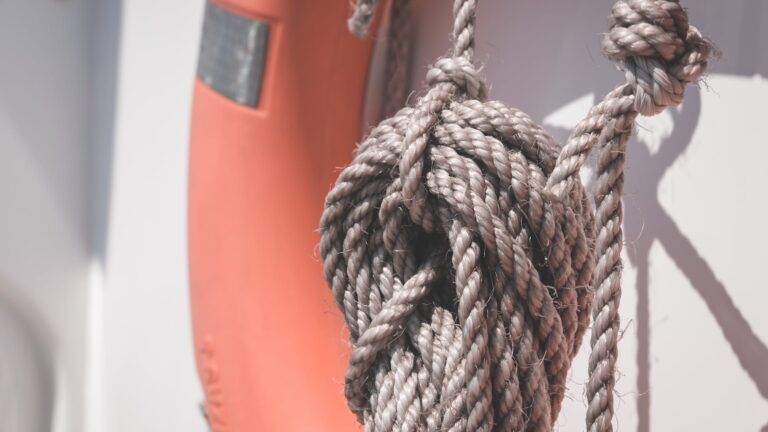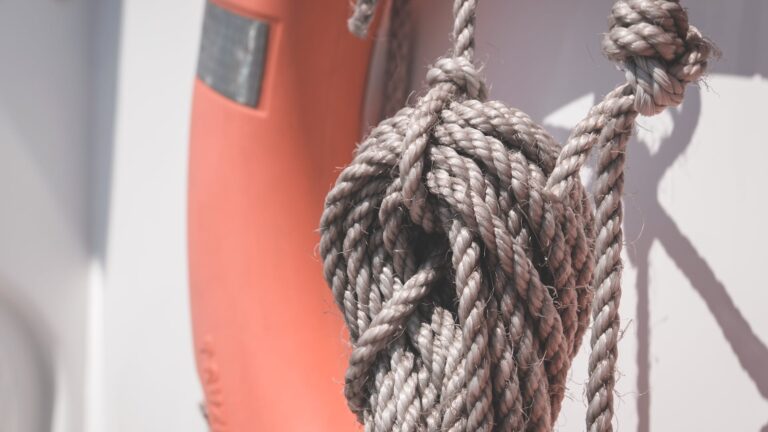What is a perfection knot?
- Introduction
- History of the Perfection Knot
- What is the Perfection Knot?
- Why is the Perfection Knot Important for Sailing?
- How to Tie the Perfection Knot
- Benefits of the Perfection Knot
- Common Mistakes When Tying a Perfection Knot
- Different Variations of the Perfection Knot
- Tips for Successful Tying
- Conclusion
- References
The Perfection Loop Knot: Essential for Any Skilled Sailing Enthusiast
A sailing trip isn’t complete without a reliable knot tying your sails, lines and leashes together – and that’s where the perfection loop knot comes in! The perfection loop knot, also known as the angler’s loop, is one of the most essential knots to know before embarking on your sailing journey, and will become your go-to when it comes to tying small loops along with standing ends of leader and tippet lines. Here, we’ll explore everything you need to know about this essential knot for any sailing enthusiast, from its history and benefits to how to tie it yourself – so that you can be sure your sailing journey will be a success!
## History of the Perfection Knot
The perfection knot has been used in various forms for centuries, although its exact origin is unknown. It was first documented by William Crampton in his book “The Art of Angling” in 1793 as an angler’s loop commonly used by fly fishermen looking for a reliable way to secure their line. In more recent years, it has been adapted and popularized as an essential part of sailor’s knots and lashing techniques, making it a must-know knot before any sailing excursion!
## What is the Perfection Knot?
The perfection knot is a type of looped binding knot used to secure two items together or tie one end of a rope or line securely around an object without slipping or becoming undone easily over time – making it an ideal choice for sailors looking for reliability and security during their trips! It can also be used to create a small loop that lies perfectly in line with the standing end of leader or tippet lines – which makes it perfect for attaching lures or bait when fishing from shore or from boats on open water!
## Why is the Perfection Knot Important for Sailing?
Sailing requires strong knots that won’t come undone easily over time due to winds, waves and choppy waters – making it essential that sailors use reliable knots like the perfection knot when securing sails, lines, leashes and other items on board their vessels! This knot creates an incredibly strong bond between two objects while still being relatively easy to undo should adjustments need to be made while out at sea – making it an ideal choice for those looking for reliability during their journeys!
## How To Tie The Perfection Knot
The process of tying a perfection knot might seem intimidating at first but with some practice you’ll be able to tie this reliable knot quickly and easily every time! First, start by creating a loop at one end of your rope or line using your thumb and forefinger with enough slack so you can complete four wraps around your fingers like with any other looped binding knot. Then take your free end of line or rope over top of itself before threading through its own loop twice – finally pulling tight until you have a reliable securely tied perfection knot!
## Benefits Of The Perfection Knot
Aside from its reliability over time during tumultuous weather conditions at sea, there are several other benefits associated with using this common sailor’s knot! One major benefit is its versatility; not only can you use this same technique with various types of rope or line but you can also switch up how many wraps you make around your fingers depending on how much tension you need in different areas on board your vessel – making this one very customizable solution! It also helps prevent fraying due to its double wrap technique which keeps fibers together tightly even after intense wear-and-tear due to waves and weather conditions – making this one very durable option as well!
## Common Mistakes When Tying A Perfection Knot
One major mistake sailors make when attempting this versatile binding knot is not leaving enough slack between their fingers when wrapping around them; if there isn’t enough slack then there won’t be enough room left over once all four wraps are completed which will result in an ineffective binding overall! Additionally, some sailors fail to pass through their own loops twice when threading them through – resulting in an unreliable final product that won’t provide adequate security in turbulent waters due to poor construction!
## Different Variations Of The Perfection Knot
While there are no variation knots associated specifically with the perfection loop alone due its strength and reliability as-is, some sailors may choose to combine different varieties of other sailor’s knots such as half hitches or figure eights into their version depending on their own individual needs aboard their vessels – allowing them total customization when it comes to what kind of security they need while out at sea!
## Tips For Successful Tying
When attempting this essential sailor’s knot yourself don’t forget these helpful tips: Firstly make sure there is enough slack between your thumb and forefinger when creating your initial loop so there is space left over once all four wraps are done; Secondly pass through your own loops twice instead of just once before tightening; And finally practice makes perfect so keep trying until you master tying this versatile sailor’s must-know binding technique every time!
## Conclusion
The perfection loop knot is one essential sailor’s skill all enthusiasts must learn before setting off on any voyage; not only does it provide unbeatable security but its durability makes it ideal for turbulent waters out at sea – meaning no matter what kind of voyage awaits ahead all savvy sailors should have this reliable binding technique locked down first before taking off into open waters!
## References:
Crampton, W., (1793). The Art Of Angling: Being An Entire Body Of The Most Approved Methods For Catching All Sorts Of Fish In Pond Or River by William Crampton (1764–1862). London: G & J Robinson







